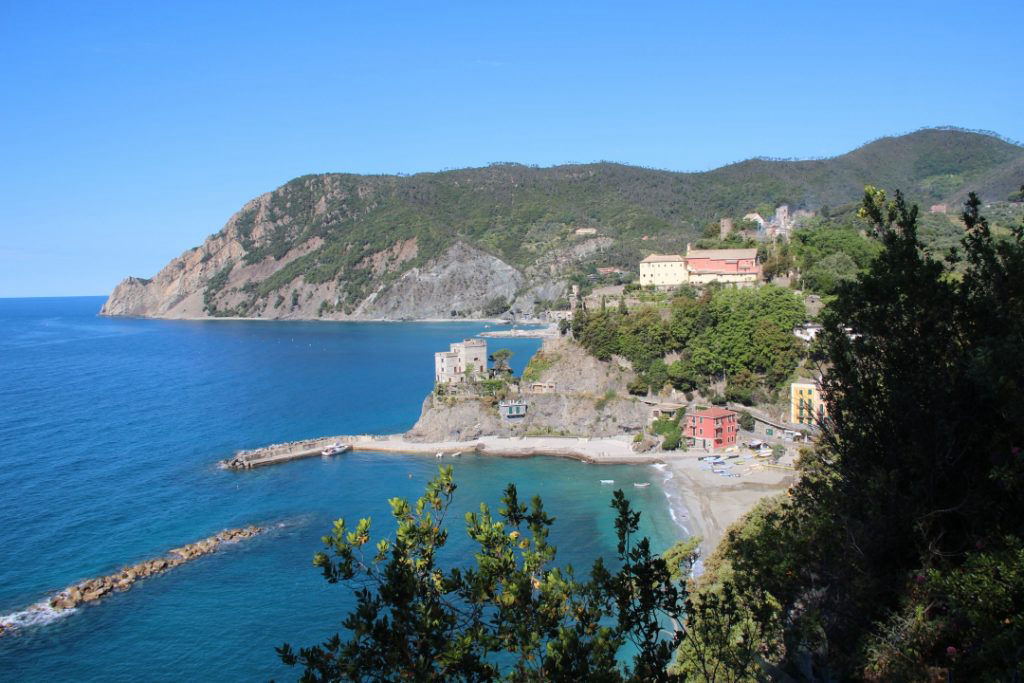Ring excursion on the high paths of the village dear to Montale: among sea flakes, Jurassic rocks, ancient lemon groves and blooms.
There is no panoramic point in the Cinque Terre that does not contemplate Punta Mesco, a promontory that closes the Marine Protected Area to the west dividing the village of Monterosso al mare from that of Levanto. This week's virtual hike takes you right up to this massive rock formation, the site of the Nobel Prize-winning poet Eugenio Montale's youth walks.
A circular route with departure and arrival in the village, passing through Valle del Morione, through a patchwork of environments and naturalistic emergencies. Within a few kilometers, Jurassic rocks, ancient lemon houses and the remains of an ancient history.
Length, 8.6 km, Difference in altitude 509 m, Difficulty EE
To get to the top and be able to "observe the distant beating of sea flakes among the leaves", the itinerary starts from the old town through the path that from Via Roma goes up along the Morione Valley: here you meet imposing sandstone walls built with lime binder that enclose ancient lemon gardens.
Going up the scenery changes and, among the coolness of holm oaks, cork oaks, chestnuts and strawberry trees, alternating with vineyards and olive trees, you get to the Eremo della Maddalena where, near the historic vineyard you can appreciate the organic installation "A Roots Discovered" by the artist Marco Nones.
Taking path no. 591 from Colla di Gritta, Sella Bagari towards Punta Mesco, the scenery changes decisively and the steps move along the back of the mountain.
On the ridge the history is told by the rocks, practically walking "on the Jurassic". Up to the promontory of Mesco you can observe a section of what millions of years ago was an ocean, the Tethys: first you meet gabri and serpentinites, magmatic rocks then argillites and Gottero sandstones which, on Mesco, appear in powerful cliffs.
The landscape becomes lunar, among the colors of the Mediterranean scrub stand out juniper, myrtle and helichrysum, in this season the blooms of thyme and ligustica thorny euphorbia are plentiful.
On one side the row on the Cinque Terre on the other Levanto up to the promontory of Portofino. Finally, among strawberry trees, cysts, and other essences, among which the Santolina Ligustica stands out, we arrive at the Hermitage of Sant'Antonio *, surrounded by the dense holm oak that gives freshness and creates an atmosphere suspended in time.
The return stretch is all downhill on the SVA n. 590, up to the Giallognola Pagoda, the villa with two palms, the summer home of the poet from Ossi di Seppia.
A plaque on which is engraved the verse "the house of my distant summers was beside you, you know, there in the village where the sun cooks and the mosquitoes cloud the air" preludes the suggestions promised by the village and anticipates the arrival at warm beaches of Località Fegina
The visible walls are what remains of a hermitage founded by the Augustinian monks probably around the middle of the 13th century. Dominating a vast coastal arch, from the island of Tino to the promontory of Portofino, it does not exclude that it was used since the early Middle Ages as a sighting and signaling point.

